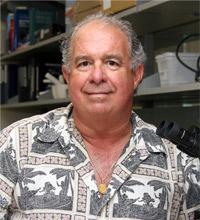
I'm catching an earful about St. Lucie estuary pollution from some of the folks I used to know during the years I lived on the Treasure Coast. I'm pretty sure they're ready to tar and feather me.
Many of them believe my concentration on septic tanks as the primary source of pollution is a deliberate dodge to divert attention from the real major source of the problem, Big Sugar.
One of these people, lifelong Stuart resident and attorney Mac Stuckey, wrote me an email after my Nov. 3 column in which I said Sen. Joe Negron, R-Stuart, should have supported a bill mandating septic tank inspections. In part, he said this:
"Septic tank 'science' is being used to divert the public's attention from the real cause," Stuckey said in his email. "Your condescending tone in the article you wrote, attempting to 'teach' Mr. Negron something would be comical if it wasn't so delusional and part of the problem."
What is so interesting about this email is, it came in on precisely the same day I discovered another Brian LaPointe study -- in fact, a 10-year-old study -- that produced the same results as the one biologist LaPointe presented to the Martin County Commission Nov. 3.
Please click on the attachment below, "Effects of Hurricanes, Land Use, and Water Management on Nutrient and Microbial Pollution: St. Lucie Estuary, Southeast Florida," from The Journal of Coastal Research for November 2012. Scientists involved were Brian E. Lapointe, Laura W. Herren, and Bradley J. Bedford. The three were working for the Marine Ecosystem Health Program, part of Florida Atlantic University's Harbor Branch Oceanographic Institute.
The team studied the estuary in 2005 and 2006, following the most active Florida hurricane season in recorded history.

Note that scientists concluded there were two problems involving Lake Okeechobee discharges and septic tank pollution in the local basins: The highest nutrient and fecal coliform was in canals and tidal creeks surrounded by septic tanks; and the highest ammonium and phosphate were found in the river's North Fork, which is not influenced by the C-44 discharges into the South Fork.
What that means in a nutshell is, the most polluted fork of the river wasn't affected by agriculture/fertilizer runoff.
Says the report, "The data suggest that increased stormwater retention, minimization of freshwater releases from Lake Okeechobee, and enhanced treatment of both stormwater and sewage are needed to mitigate future stormwater-driven water quality perturbations in the St. Lucie estuary."
All this is repeated in the concluding paragraph:
"Improved capacity for storage, minimization of freshwater releases from Lake Okeechobee, and treatment of stormwater runoff and sewage in the watersheds of the St. Lucie estuary extending to Lake Okeechobee and the Kissimmee River basin, must be implemented if these (pollution) problems are to be moderated in the future."
What this study tells me is that 10 years ago waterfront communities of the Treasure Coast had a septic tank problem, and they've done little that I can see to address it.
I want to apologize if, as Mac Stuckey says, I've come off in these columns as condescending. Certainly, I'm no scientist, nor could I ever pose as one. I just try to do my homework and report what I find. That's about the best I can do.
Reach Nancy Smith at nsmith@sunshinestatenews.com or at 228-282-2423. Twitter: @NancyLBSmith


